Forts: Capturing “The Rebel Fort Henry on the Tennessee River”
On February 6, 1862, Fort Henry on the Tennessee River surrendered after Union attack. It was a much-needed victory for the Union cause and newspapers rapidly picked up the accounts.
I found this account from the February 8th edition of the Chicago Tribune very interesting and details and wanted to pair it with historical photos and maps bring the account visually “to life.”
Special Dispatch to the Chicago Tribune
Cairo, February 7, 12 [?]M — 1862.
The gunboats Cincinnati, St. Louis, and Essex have just returned from the rebel Fort Henry, on the Tennessee River. The stars and stripes now float over that place. Yesterday at 12:38 P.M., the gunboats Cincinnati, St. Louis, Carondelet, and Essex; the Taylor, Conestoga and Lexington bringing up the rear, advanced boldly against the rebel works, going to the right of Painter Creek Island, issuing above which, on the cast shore of the river, stands the fortifications; and keeping consequently off range till at the head of the island, and within a mile of the enemy, passing the island in full view of the rebel guns, we steadily advanced, every man at quarters, every ear strained to catch the flag officer’s signal gun for the commencement of action.
Our line of battle was on the left; the St. Louis next; Carondelet next; the Cincinnati, for the time being, the flag ship, having on board flag officer A.H. Foote, was next to the right of the Essex.
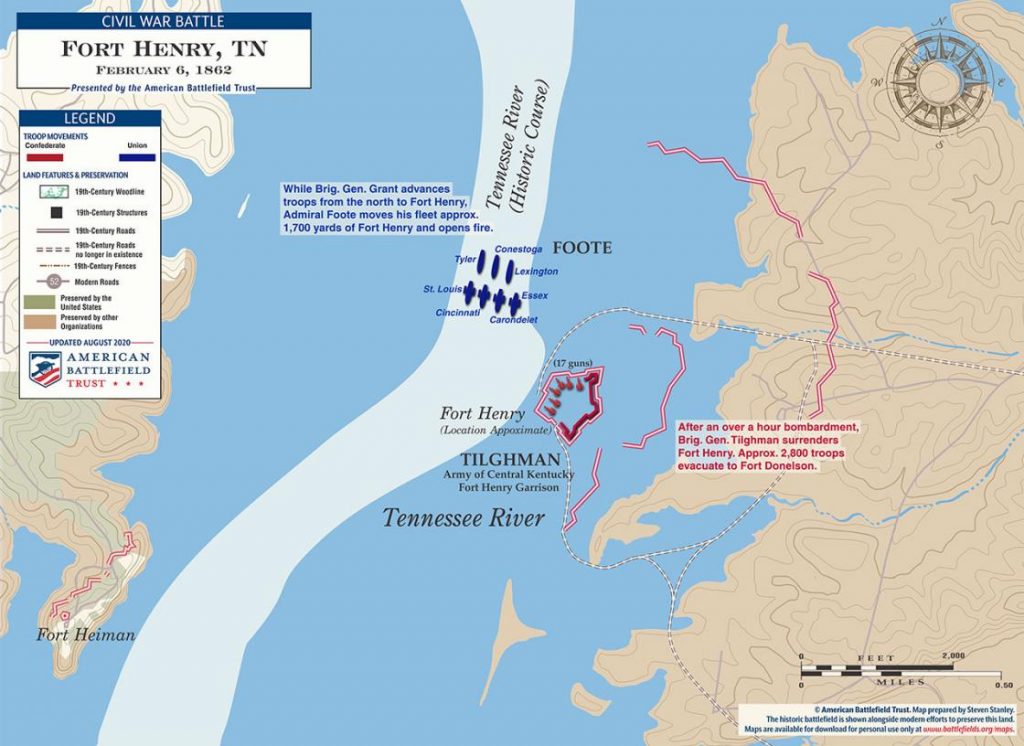
We advanced in line, the Cincinnati a boat’s length in advance, when, at 12:30, the Cincinnati opened the ball, and immediately the three accompanying boats followed suit.
The enemy, not backward, gave admirable response, and the fight raged furiously for half an hour. We steadily advanced, receiving and returning stories of shot and shell, when getting within 300 yards of their works, we came to a stand and poured in to them right and left. It was magnificent; the whistling shot, chugs of the scip scips, and the cheering of our men as our shots took evident effect.
In the meantime the Essex had been disabled and drifted away from the scene of the engagement, leaving the Cincinnati, Carondelet and St. Louis engaged.
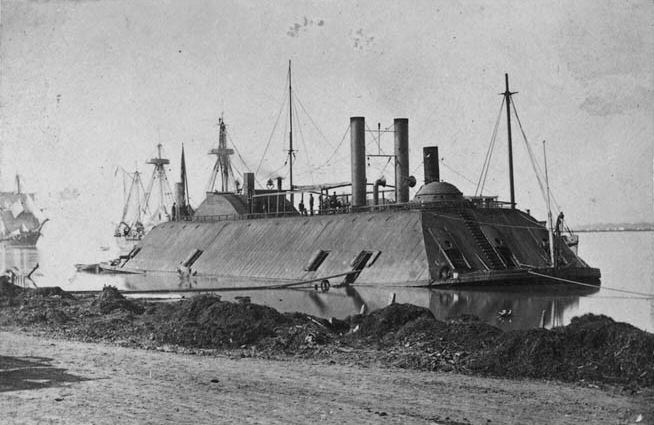
At length, at precisely 1:40, the enemy struck his flag, and such cheering, such wild excitement as seized the throats and arms and caps of the 400 or 500 sailors of the gun boats. Well, imagine it.
After the surrender, which was made to flag officer Foote by the rebel General Floyd Tilghman, who defended his fort in a most determined manner, we found that the rebel infantry, encamped to the number of some 4 or 5 thousand outside the fortification, had cut and run, leaving the rebel artillery company in command of the fort to their fate.
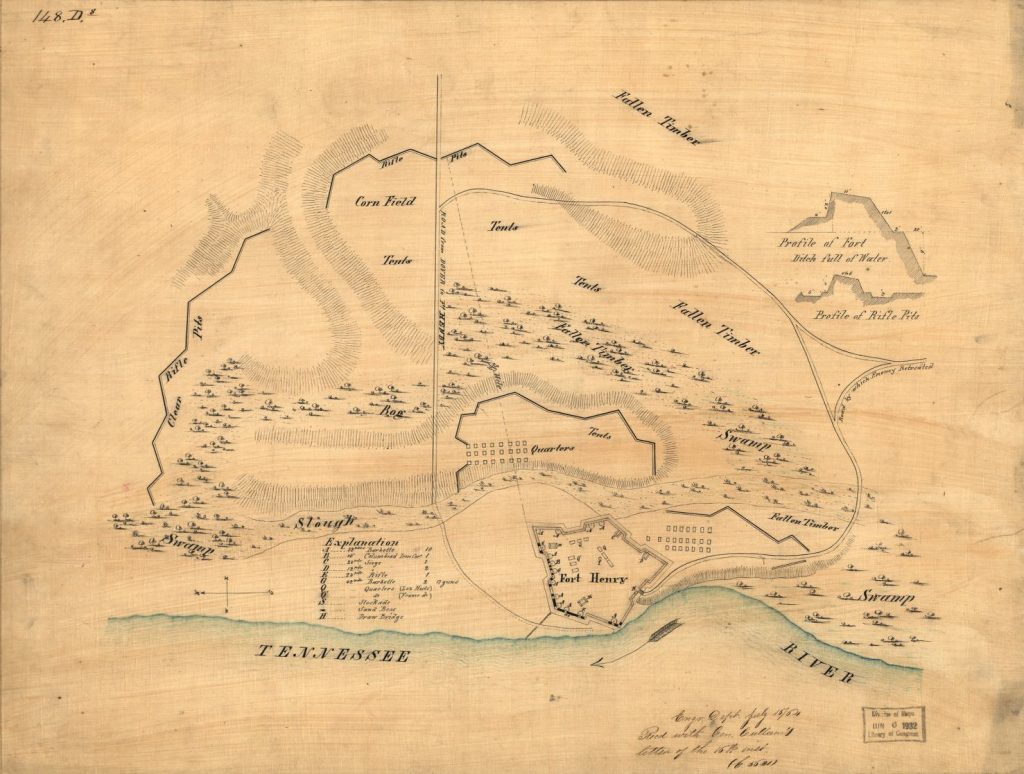
The fort mounted 17 guns, mostly 32 and 24 pounders; one, however, a magnificent 10 inch columbiad. They claim to have had but 11 effective guns, worked by 54 men, which is the number all told, of our prisoners.
Our shots had dismounted 2 of their guns, driven the enemy from their embankments, and played smash with them generally.
They lost five killed and some ten badly wounded. One of their rifled gun, a 32 pounder, burst during the engagement, badly wounding one of their gunners, but killing none.
Capt. Taylor of Nashville, rebel commander of the fort artillery company, (now our prisoner,) says this 32-pounder is the gun that did their chief firing.
Watts, formerly of Cincinnati, and of Mason county, Ky., of the firm of Watts & Colburn, was their ordinance officer. He is now our prisoner.
The infantry fled from their quarters, leaving bag and baggage. A vast deal of plunder has fallen into our hands, and a large and valuable quantity of ordinance stores.
Gen. Tilghman is disheartened, and thinks it one of the most damaging blows of the war.
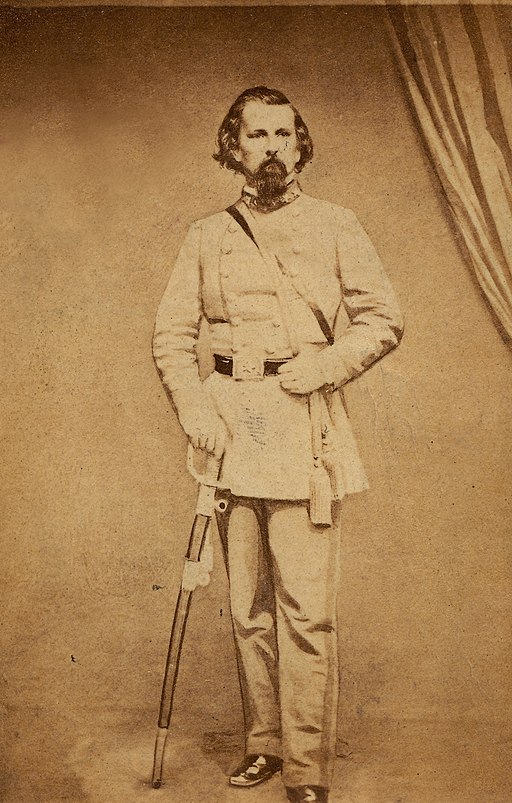
In surrendering to our flag officer, the rebel General remarked: “I am glad to surrender to so gallant an officer.”
The flag officer Foote replied: “You do perfectly right, Sir, in surrendering; but you should have blown my boats out of the water before I would have surrendered to you.”
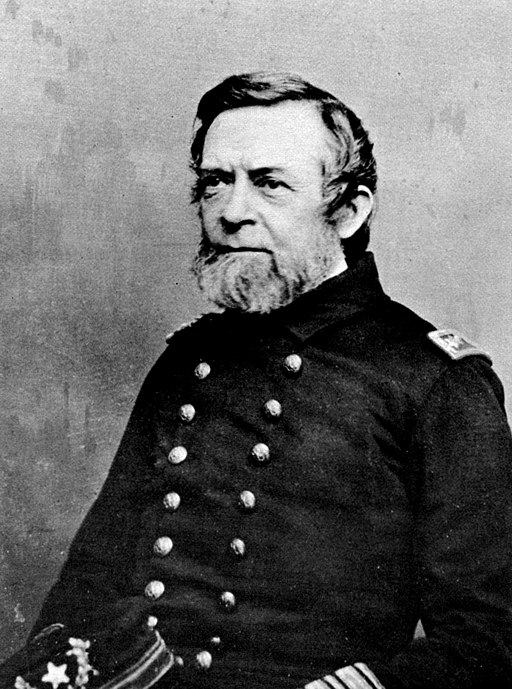
The land force under command of General Grant did not arrive at the fort till after the rebels had surrendered, and their army escaped.
Our gunboats did splendid fighting. We can make no distinctions. The Cincinnati, however, was in the lead and flying the Flag Officer’s pennant, the chief mark. Flag Officer Foote and Capt. Stombel crowded her defiantly into the teeth of the enemy’s guns. She got 31 shots, some of them going through and through her. She expended 110 shots.
Pringle Carradice, seaman, of Hamilton, C.W., was killed outright; Wm. Lakeman, seaman, badly wounded; Martin Hussey, George Massey, Wm. Curtis, Michael Dalton and E.N. Arilla, all seamen, were slightly wounded; Capt. D.H. Pratt, Second Master of the boat, was slightly wounded.
The Essex was badly crippled. When about half through the fight, and crowding with a splendid heroism steadily against the enemy, a ball went in at her port side forward port, through one of her boilers; the escaping steam scalding and killing several of her crew, and bodily wounding many more. Capt. Porter, his aid, S.P. Britton, Jr., and Paymaster Lewis, were standing on a direct line of the ball’s passage, Britton being in the centre of the group. The shot struck poor Britton on his top of the head, scattering his brains and blood in every direction. The escaping steam went into the pilot house, quickly killing the two pilots, Ford and McBride. Many of the sailors, at the rush of steam, jumped overboard and were drowned.

Here is the complete list of the Essex dead, wounded and missing. This casualty to the Essex has cast a gloom over our fleet, and somewhat dampens the enthusiasm of our victory.
KILLED— M.H. Ford, Jas. McBride, pilots; S.B. Britton, Quartermaster’s mate; David Wilton, captain of gun; J. Coffey, Jasper P. Brease, seaman.
OFFICERS WOUNDED— Commander W.D. Porter, Theo. P. Ferry, 3d master.
SEAMEN WOUNDED (badly)— John Matthews, N. McCarty, Peter White, G.E. Nichols, Samuel Boyer, B. Harringon, Wm. O’Brien.
SEAMEN WOUNDED (slightly)— John Rodgers, Francis Wilson, Harvey Hogan, Thomas Mullen, W.H. Maxley, T. Sullivan, John O’Hara, John Castello, J.J. Phillips, B. Solin.
MISSING— A.D. Waterman, Jno. Larrise, Henry Gulper, Henry Reynolds, Jas. Bedard.
A detachment from one of the Indiana regiments, taken on board the Essex just before engaging the enemy, to act as sharp shooter, under command of Dan’l Trotter, lost some of their men, as follows:
Killed— Chas. Stocker; Lewis Gantz.
Scalded— Lieut. Trotter, Chas. E. Erb, J. Lump.
Missing— Wm. O’Neal, and Benj. Lubec.
Lieutenant Trotter is now on the Tyler, and said to be badly scalded. David Wilson, the gun captain, being mortally wounded, worked his gun after the accident, he being mortally wounded at the time.
There was no casualties on board the St. Louis or Carondelet, though the shot and shell poured upon them as rain.
The St. Louis was under the command of Capt. Leonard Paulding, who personally stood upon the main deck and directed the guns to the last. Not a man flinched, and with cheer upon cheer we sent the scip-scips among the enemy. The St. Louis received seventeen shots, and expended 106.

I have not been upon the Carondelet; she yet being at the Fort. I cannot say what damage is done her. She was near to our boat, however, and stood splendidly up to the work. Capt. Walker’s shots were neither few nor far between.
[Break]
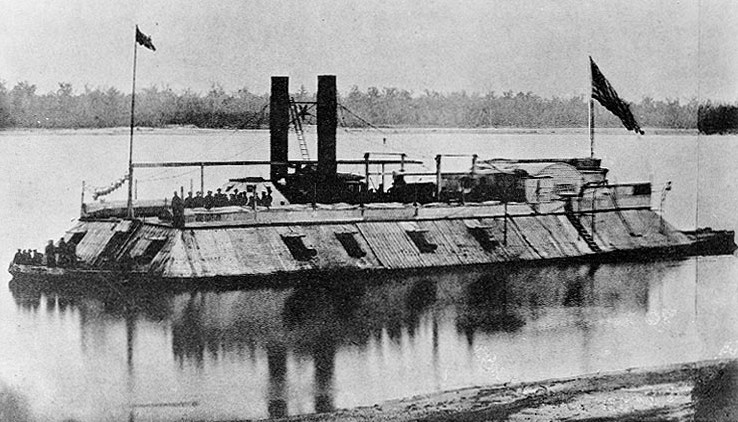
COMMODORE FOOTE’S DISPATCH
Washington, Feb. 7 — Flag officer Foote, in his official report to Secretary Wells, says: “After a severe and rapid fire of an hour and a quarter, I have captured Fort Henry. The surrender to the gunboats was unconditional, as we kept an open fire upon the enemy until their flag was struck. In half an hour after the surrender, I handed the Fort and prisoners over to Gen. Grant, commanding the army, on his arrival at the Fort in force.”
“The Essex had a shot in her boiler after fighting most effectively for two-thirds of the action, and was obliged to drop down the river. I hear that several of her men were scalded to death, including the two pilots. She, with the other gunboats, officers and men, fought with the greatest gallantry. The Cincinnati received 31 shots, and had one man killed and eight wounded—two seriously.
The fort, with 20 guns and 17 mortars, was defended by Gen. Tilghman with the most determined gallantry. I will write as soon as possible. I have sent Lieutenant Commanding Phillips, and three gunboats, up after the rebel gunboats. (Signed) A.H. Foote, Flag Officer.
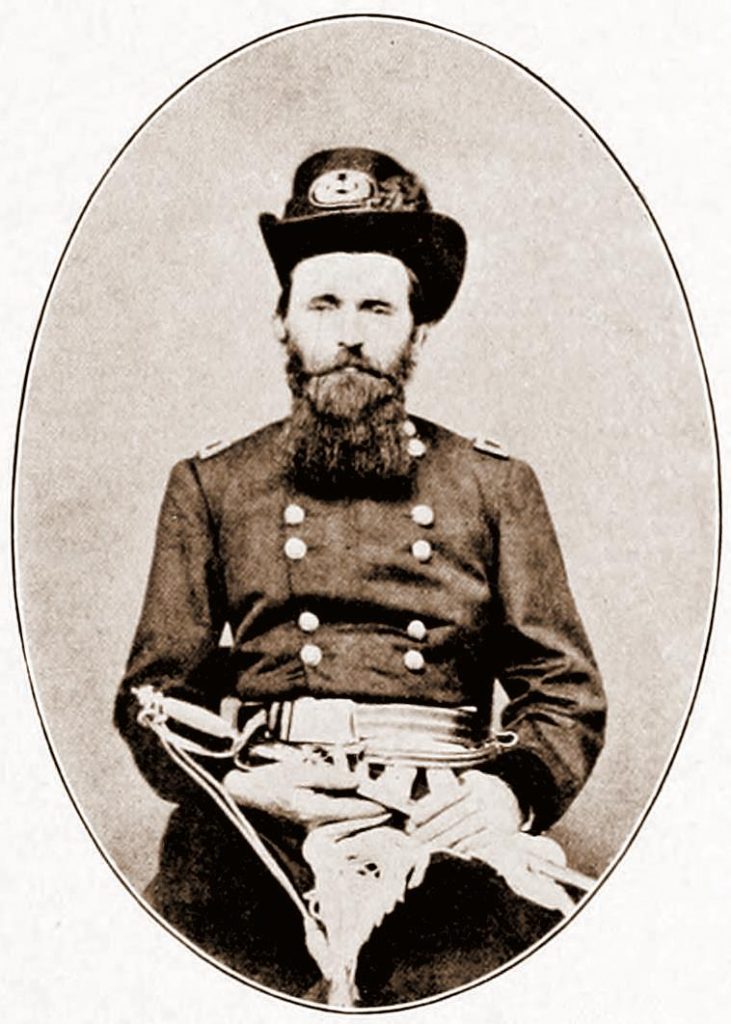
Several other accounts from other correspondents extend the column about the battle and capture of Fort Henry. Then two accounts offer an interesting juxtaposition to the future and how the Confederates had viewed the situation at Fort Henry just a week earlier.
FORT DONELSON TO BE ATTACKED.
LOUISVILLE, Feb. 7— A dispatch from Gen. Halleck to Gen. Buell, this evening, says: “We have taken Fort Henry. The enemy has retreated on Paris, leaving part of his guns. Our cavalry are in pursuit. Gen. Grant will attack Fort Donelson tomorrow.
THE REBELS ANTICIPATE DEFEAT.
A correspondent of the Memphis Appeal (30th ult.), speaking of the anticipated attack on Forts Donelson and Henry, says:
Fort Donelson, with its 3,000 heroes, will be held against all opposition. More solicitude is felt about Fort Henry. In the first place, it is built in a low place, which is easily commanded from a high hill on the opposite soil. That hill is now in the possession of our forces, and if we lose it, Fort Henry cannot long hold out, through there are provisions enough there to last our forces for months. Those in possession of Fort Henry have resolved to fight outside of the intrenchments. The water at the Fort is said to be within a few feet of our magazines, and within six feet of our largest guns, and at last accounts the river was still rising.


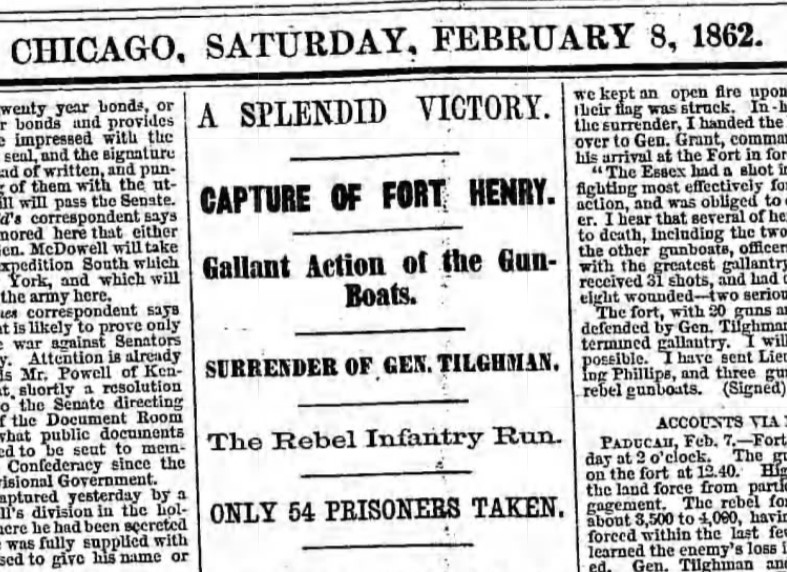
Sarah, Would enjoy having you speak at our round table here in Chattanooga. I’m the president of this local chapter. Email is cccwrtable@gmail.com. R/ Ed Lowe
Hi Ed, thanks for the note. I’ll follow up via email. Just catching up on comments today and glad I saw yours! Sarah
The pictures of the St Louis and the Carondelet appear to be identical. Same picture, different label??
You raise an interesting point and it is perplexing! There is a star emblem between the stacks on the Carondolet and a masonic device on the St. Louis. St. Louis has a mainmast midway after the stacks– nothing on Carondolet. They are flying different flags/pennants at the foremast. But the tree lined backgrounds look identical as do the basic shape and details of the vessels.
I really enjoyed this posting and the forts thread as the river warfare fascinates me as much as the sea based CW ironclads. I learned of the “Pook Turtles” as a 12 year old when “Ironclads of the Civil War,” (American Heritage Jr. series, 1964) arrived in the mail. A whole new aspect of the conflict was revealed!
They do look really similar, but to the best of my knowledge and the archive photo labeling, they are different boats!
Thank you for the research and info. Most detailed i have come across. I’ve been trying to find what happened to the men injured on the Essex (what hospital, burial place or any info), especially of G. E. NICHOLS (my GG Grandfather). II once read in physician records (but lost reference) that he survived for some time, but don’t know where he was treated, he died or where buried. If anyone has any information on further details of those injured, i would greatly appreciate (Dseelhoff@aol.com). Thank you.